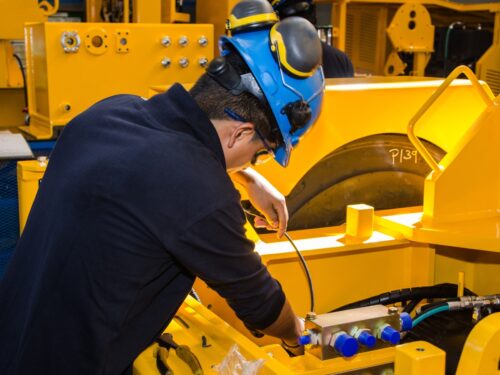
Despite its widespread application and success across various industries, there are still many misunderstandings of Lean and Lean leadership. Here are eight common misunderstandings of Lean that we have found when working across industry, the service sector, and commerce.
- Focus on Tools Over Philosophy:
- Misunderstanding: Many believe Lean is primarily about implementing specific tools and techniques (like Kanban, 5S, or Kaizen).
- Reality: Lean is fundamentally a philosophy and mindset focused on continuous improvement and the reduction of waste. Tools are secondary to understanding and embodying principles that build a culture of Lean.
- Top-Down Implementation:
- Misunderstanding: Lean initiatives are often thought to be most effective when driven from the top down, with leaders dictating changes.
- Reality: While leadership support is critical, Lean thrives on engaging all employees, fostering a culture of bottom-up ideas and continuous improvement. When all are focused on Lean improvement, the entire business thrives. The role of leadership becomes the removal of obstacles so all can drive capability and capacity.
- Lean Equals Cost Cutting:
- Misunderstanding: Lean is frequently equated with cost reduction measures.
- Reality: This is still the overarching belief in many companies, but it is misguided. Lean aims to enhance value to the customer by eliminating waste, which can lead to cost savings, but the primary focus is on improving quality, efficiency, and employee satisfaction, not on reducing headcount.
- Lean is Only for Manufacturing:
- Misunderstanding: Lean principles are often seen as applicable only to manufacturing environments.
- Reality: Lean principles can be applied across various sectors, including finance, healthcare, software development, and service industries, wherever process improvement could be beneficial. We have seen Lean employed from improving the throughput in operating theatres to debt recovery, to cross-country transport of human organs for transplantation, to management of resources for care in the community.
- Immediate Results Expected:
- Misunderstanding: There is an expectation that Lean implementation will yield immediate and dramatic results.
- Reality: While the application of Lean can result in improvement in as little as one shift, Lean is a long-term commitment to a culture of continuous improvement. Significant results often take several years and demand sustained effort to materialise.
- Lean is a One-Time Project:
- Misunderstanding: Some view Lean as a project, a sort of ‘bolt-on’ with a defined beginning and end.
- Reality: Those who have been successful at Lean implementation know that Lean is an ongoing journey of continuous improvement to create a sustained cultural change. It requires persistent effort, regular assessment, and adaptation.
- Standardisation Stifles Creativity:
- Misunderstanding: Lean’s emphasis on standardisation and process control is thought to stifle creativity and innovation.
- Reality: Standardisation provides a stable foundation from which innovation and creativity can flourish. Standardisation eliminates chaos and frees up resources so each team member can focus on creative problem-solving and improvements.
- Lean Ignores People Development:
- Misunderstanding: Lean is sometimes seen as focusing solely on process improvement, neglecting the development of people.
- Reality: Lean leadership emphasises the essential input of people and invests heavily in training and empowering employees to solve problems and improve processes.
People + Process = Performance
Understanding these aspects will help leaders more effectively implement Lean principles and cultivate a culture of continuous improvement within their organisations.
If you would like to work through these misunderstandings and drive Lean processes in your organisation, then please get in touch.



